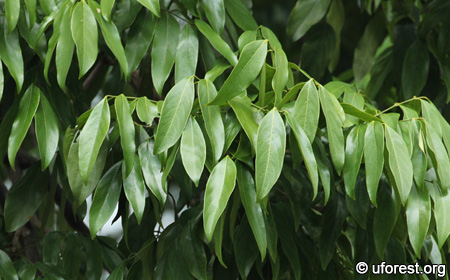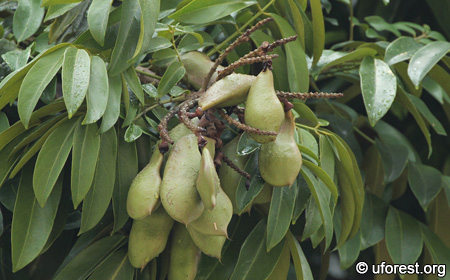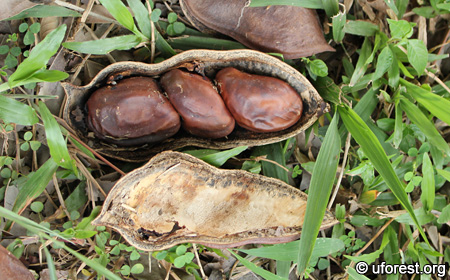Adinobotrys atropurpurea (Wall.) Dunn
| Etymology | Genus | - |
|---|---|---|
| Species | Black-purple, referring to the flowers | |
| Family | Fabaceae | |
| Synonyms | Callerya atropurpurea (Wall.) Schot, Pongamia atropurpurea Wall., Millettia atropurpurea (Wall.) Be | |
| Common Names | Purple Milletia, Jenaris, Tulang Dain | |
| Status | Exotic: Naturalised | |
| Form | Tree | |
| Native Distribution | Indochina (Myanmar, Thailand) and West Malesia | |
Diagnostics:
This tree can be easily identified from its dense, symmeterical, dome-shape canopy. The leaflets are droopy, glossy, and bend slightly upwards at the mid-ribs.
Interesting Facts:
This attractive and commonly cultivated tree was first introduced around the 1938 near the former Bukit Panjang village (Wee & Corlett, 1986). It bears imparipinnate leaves which are distinctly glossy. The seed pods become brown upon maturity and splits to reveal two or three large, brown, and hard seeds. Wild individuals of Callerya atropurpurea have been observed in the Bukit Timah Nature Reserve (LaFrankie et al., 2005), Central Catchment Nature Reserve (MacRitchie Reservoir area; pers. obs.), and Botanic Gardens' Jungle (Turner et al., 1996).

The Purple Milletia always have a dense crown of canopy.

The leaflets are droopy, glossy, and bend upwards at the mid-ribs.

The purple flowers, and developing fruits at the base.

Immature fruits

The capsule typically contains two or three seeds.
References
LaFrankie JV, SJ Davies, LK Wang, SK Lee & SKY Lum. (2005) Forest Trees of Bukit Timah: Population Ecology in a Tropical Forest Fragment. Simply Green, Singapore. 178 pp.
Turner IM, KS Chua, JSY Ong, BC Soong & HTW Tan. (1996) A Century of Plant Species Loss from an Isolated Fragment of Lowland Tropical Rain Forest. Conservation Biology, 10: 1229-1244.
Wee YC & R Corlett. (1986) The City and The Forest. Plant Life in Urban Singapore. National University of Singapore Press, Singapore. 186 pp.
Author: Siyang
Posted: 2012-11-27 / Modified: 2025-10-28